|
|
Inauguration Christian Hess Retrospective
Rabalderhaus Museum Schwaz
13 June 2008 - 5.30 pm
|
|
 |
|
|
|
OPENING ADDRESS BY DOTT. OTTO LARCHER
DIRECTOR RABALDERHAUS MUSEUM,
SCHWAZ |
|
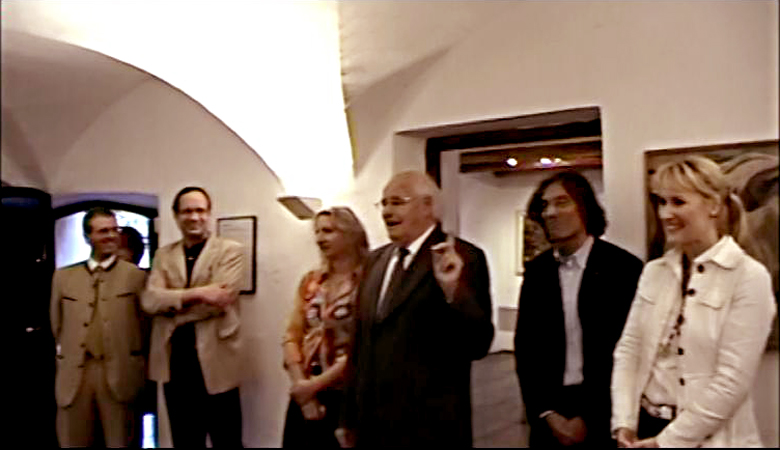 |
|
Ladies and gentlemen, kind visitors to the Rabalderhaus, I
would like to thank you for your presence here at the
inauguration of the Christian Hess Exhibition. This is a
great occasion for our museum, which began its activities in
April 1996 with Andrea Bischon. For years I have been
seeking to put on display here the works of Christian Hess;
it is here in Schwaz that the painter spent his last days
and it is here that he died. This is also a great event for
us because it is the 100th exhibition to be hosted by the
Rabalderhaus and furthermore because it has received the
patronage of the President of the European Parlament,
Hans-Gert
Pöttering. This is a great honour, and we would like to
thank Signor Ardizzone, who is here today representing the
Christian Hess Cultural Association from Rome, who helped
make this precious recognition possible. We are glad that,
despite the European Football Championships, so many of you
have turned up today. We have set up a television in another
room, but to show a fine film about Christian Hess. I would
like to give an especially warm welcome to the artist’s
relatives who have travelled from Italy to be here, to the
official representatives of the cities and regions, Dott.
Erhard for the Tyrol Region, Frau Oberhollezner, the
spokeswoman for culture on Schwaz Municipal Council, the
representatives of the Christian Hess Cultural Association
in Rome, and all the institutions, galleries and private
collectors who have made their paintings available for this
exhibition. I would like to offer a special word of thanks
to Dott. Stefan Demetz, director of the Municipal Museum
in Bolzano, without whom this exhibition would not have been
possible.. It would not have been possible financially, and
we are glad to have found such an important partner.
But my most heartfelt thanks must go to Dott. Carl Kraus for
all the work he has contributed as curator of this
exhibition. He also wrote the wonderful catalogue and I
believe since 1974, 75, 76 there has not been such a great
exhibition. (applause). Thanks should also go to our
sponsors and all my staff. I would like to welcome Herr
Bürgermeister who has come despite the football game! This
is an exhibition of truly European status. It will run here
at the Rabalderhaus until the end of July and it will then
continue from the end of November until the end of January
in Bolzano.
|
|
|
DOTT. STEFAN DEMETZ DIRECTOR
MUNICIPAL MUSEUM BOLZANO |
|
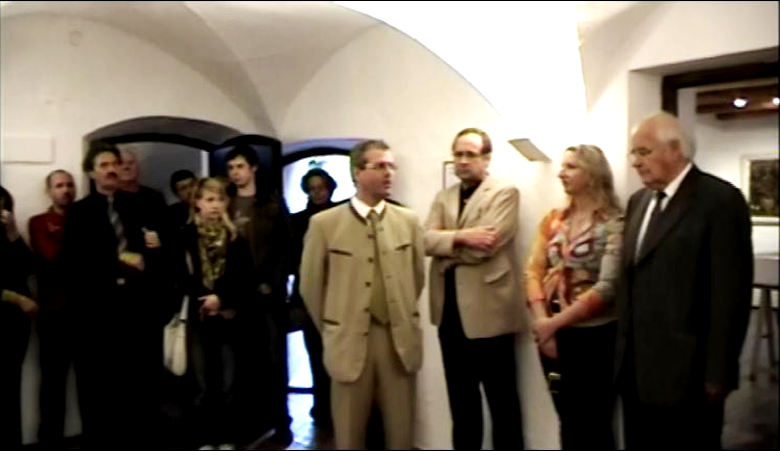 |
|
Thank you, Dott. Larcher. I am here to represent the City of
Bolzano, the spokesperson for cultural affairs was unable to
attend and sends his apologies. I was extremely grateful
when Dott. Kraus and Dott. Larcher visited us and presented
the project. It is always a pleasure to find partners who
share the same goals. Although cultural relations south of
the Brenner Pass are perennially modest, cooperation is very
important to us. Especially in this case. Christian Hess
spent only his early childhood in Bolzano and is not well
known there. We believe it is our civic duty in the case of
unknown artists whose roots are in our city to make them
more widely known. No more so than for Christian Hess. If we
compare his works with those by other artists in Bolzano
during the same creative period it must be said that Hess
reached another level. For this reason I would like to thank
you, Dott. Larcher, and all your staff for your ideas and
your personal contributions that – I must say – have led to
this interesting exhibition and its fine catalogue.
|
|
|
DOTT. BENEDIKT
ERHARD, SPOKESPERSON FOR CULTURE
TYROL REGIONAL GOVERNMENT |
|
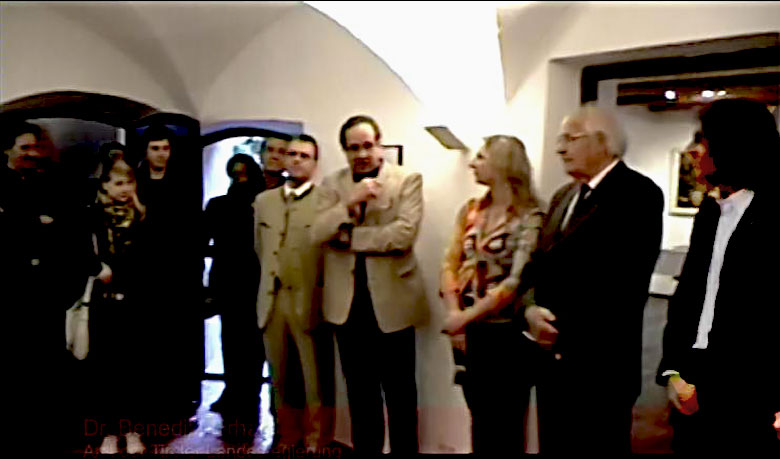 |
|
Dear Dott. Larcher, ladies and gentlemen, I am here
as a backer of this project and I will not keep you
long. Thank you for inviting me here and for giving
me the opportunity to meet some old friends from the
Tyrol. Herr Kraus and Tiziano Rossani, we see each
other so rarely; you should organise exhibitions
like this more often. I know nothing about Christian
Hess, I see that Professor Magdalena Hörmann is
here, so I was right to come: I’ll be able to learn
something new. The number of people here for this
inauguration is a comment itself on the importance
of the works on display.
It is clearly an important social event - more than
that I can’t say. It is good that you are all here
and it is good that Dott. Larcher continues to
promote these kinds of initiatives with such
perseverance - despite such limited support
structures. Herr Bürgermeister, we of the Regional
Government in Innsbruck, and the administrations who
support us, will continue to offer our support. So,
we will see each other again. Thank you again and
have a good evening.
|
|
|
|
DOTT. CARL KRAUS CURATOR OF
THE EXHIBITION
AND CATALOGUE |
|
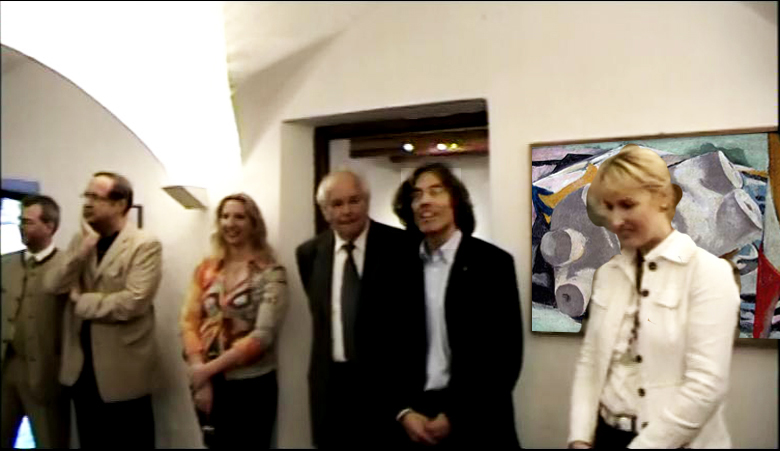 |
|
We have all heard: Christian Hess was born in Bolzano. I
would add this: he died just a few metres from where we are
now in Schwaz Hospital, in 1944 following an air-raid on
Innsbruck. He was 48 years old - my age now (I hope to live
a while longer yet) - but his major work seemed to have
finished a few years before.
In Germany, after the rise to power of Adolf Hitler in 1933,
Hess no longer had any real possibility of artistic
development. He was able to work well in Sicily, but he felt
isolated there.
Sicily was his second home - his sister Emma lived there.
He couldn’t work in Switzerland, where he was unable to
obtain stay papers. In Munich, where he had studied, the
climate was hardly favourable. He was ground down by the
dictatorship’s persecution. In the Tyrol, where he was born
and where he lived the last four years of his life, he was
not a well-known artist and his life there was not easy.
The works which you will see here were all painted between
1925 and 1935; the enormous potential of the artist is
clear. I can see here in front of me Meier Beckmann, Max
Beckmann’s daughter in law and in a sense a relative of the
artist. Thank you for making the journey from Munich. Here
you will see that Max Beckmann was a great influence on
Christian Hess. He also drew inspiration from George Grosz,
the cubists, and the artists of the Italian Novecento. But
he also created something that was entirely his own.
Around 1931 in Germany Christian Hess enjoyed notable
renown. His works were exhibited in Berlin, Hamburg, Zurich
- in every major city. He was a member of the Juryfreie
movement in Munich, a group of progressive, radical artists
whose members included Picasso and Mondrian.
After his death in 1944, Hess, like many of the so-called
“submerged generation”, slid into more or less complete
obscurity. His works were unknown; they were preserved in
Messina where in 1956 they were exhibited - but without a
catalogue. The travelling exhibition of Rediscovery was in
1974. Starting from Palermo, it then visited cities in
Italy, Austria and Germany.
I will say no further, because we are lucky enough to have
with us this evening the only living relative of Christian
Hess who knew the artist personally, his niece Luisa
Ardizzone. I would be grateful if she could tell us
something of her personal experience. I think she was nine
years old when she saw Christian Hess for the last time.
|
|
|
SIGNORA LUISA ARDIZZONE NIECE
OF CHRISTIAN HESS |
|
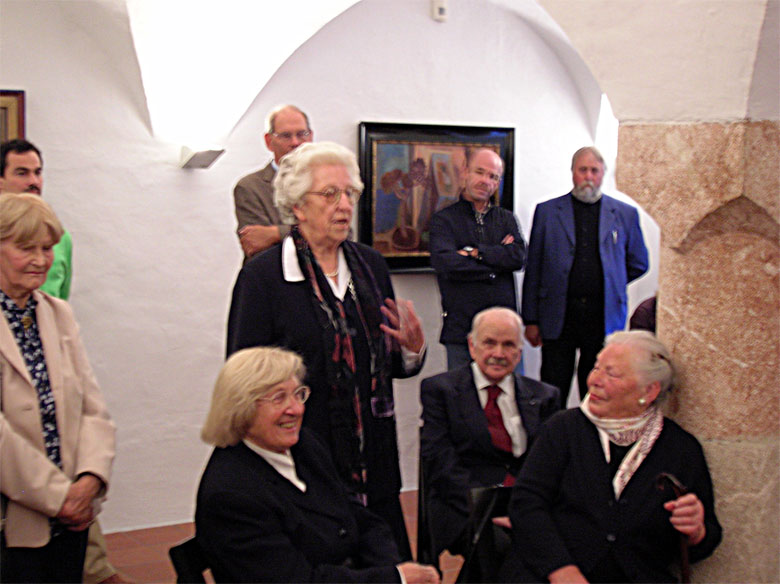 |
|
The first time I saw uncle I was still in the cradle. He
came to our house in Messina and he lived there for long
periods. The first thing he did was to teach me German. I
bear his name because he was my godfather and he held me in
his arms at my christening. It was my father‘s idea: my
name is Luisa because his name was Louis. These paintings
are full of memories for me: many were kept in my house; I
saw how he painted them, the materials he used. I remember
when he didn't‘ have any canvas he would use sheets,
curtains, material he got from my mother. Looking again at
these paintings brings back many memories from my life, my
city, the houses where we lived, the house where I was born
… Excuse me, it‘s an emotional moment
DOTT. CARL KRAUS
Thank you very much. You will now hear an address in Italian
by the director of the Municipal Museum in Bolzano, Dott.
Demetz, who would like to welcome and to thank some guests
from Italy. Members of the Cinquegrani-Comito family who
have come here today and Tiziano Rossani, who has worked
with us.
DOTT. STEFAN DEMETZ
Good evening to all those whose mother tongue is Italian. I
do not wish now to focus on Hess’ artistic output – you all
know it far better than I. I would like instead to emphasise
the importance of this joint project between the
Rabalderhaus, and its director Dott. Larcher, and we of the
Municipal Museum in Bolzano. The reason I accepted the
proposal put forward last year by Dott. Larcher and Dott.
Kraus was because I felt it would help make more widely
known the work of an artist whom I personally believe is the
greatest artist ever to have been born in Bolzano. It can’t
be said that his talent was forged in Bolzano because - I
think I’m right in saying - he left the city when he was
just eight. But there’s no doubt his roots are in the city,
and he was probably the greatest artist of the first half of
the 20th century to come from Bolzano. That is why I am
deeply proud that in November I shall be taking this
wonderful exhibition back to Bolzano. Thank you.
|
|
|
DOTT. BIRGIT OBERHOLLEZNER-
PRASCHBERGER
SPOKESPERSON FOR CULTURE – SCHWAZ MUNICIPAL COUNCIL |
|
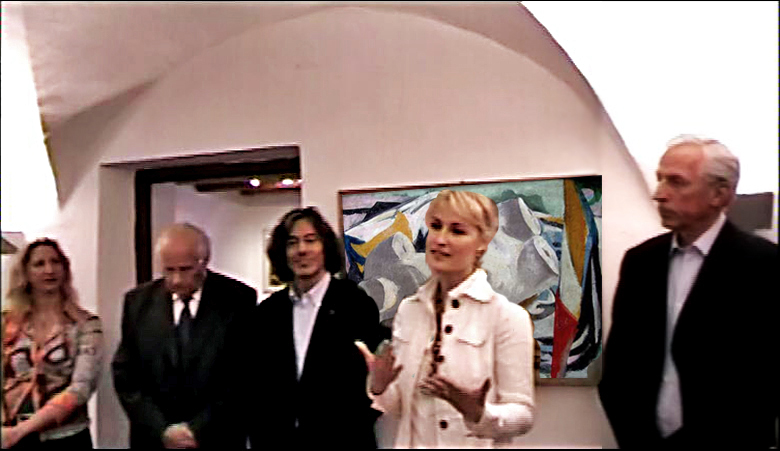 |
|
On behalf of the city of Schwaz I would like to welcome you
all here this evening, especially those who have made the
journey from the other side of the Brenner – not least
because right now the Italian national team is playing an
important game of football – and yet they’ve still managed
to find their way here to the Rabalderhaus. The Rabalderhaus
is a meeting-place. Last Friday there was the opening of the
exhibition dedicated to the work of our very own Wolfgang
Götzinger. I should like to inform our foreign visitors that
we are in the middle of a huge programme of cultural events
which make up the Schwaz Silver Summer 2008. The motto of
this year’s festival is “Culture Moves – Body & Soul” - a
free interpretation of the European soccer championships
which are taking place this summer in Austria and
Switzerland. The Rabalderhaus is a key venue for the
festival. A few days ago it hosted a prestigious literary
event, the Adorno Prize. Obviously “drive”, “thrust” and
“commitment” are important qualities not only in sport, but
also in the arts. Without this motivation, great works like
those you can admire here would not be created. Many of you
have come here from Italy - you were not put off by the long
journey. And people have come from all over the Tyrol to
join the many residents of Schwaz itself who are here this
evening. I believe it is a good thing that we can all meet
here: citizens of Bolzano and other Italian cities,
residents of the Tyrol from the north and south; it is the
very spirit of the European Union. That we can meet in
friendship, with a shared interest in art and culture. For
this reason I would like to thank everyone here, with a
special word of thanks to Dott. Larcher for his tenacity and
perseverance in organising what is the 100th exhibition at
the Rabalderhaus. I would have liked to offer him a small
glass of schnaps, but I was told it was not a good idea - so
I have brought this bouquet of flowers. And so I can now
declare open the Christian Hess exhibition.
|
|
|
>>> |
| |
| |
